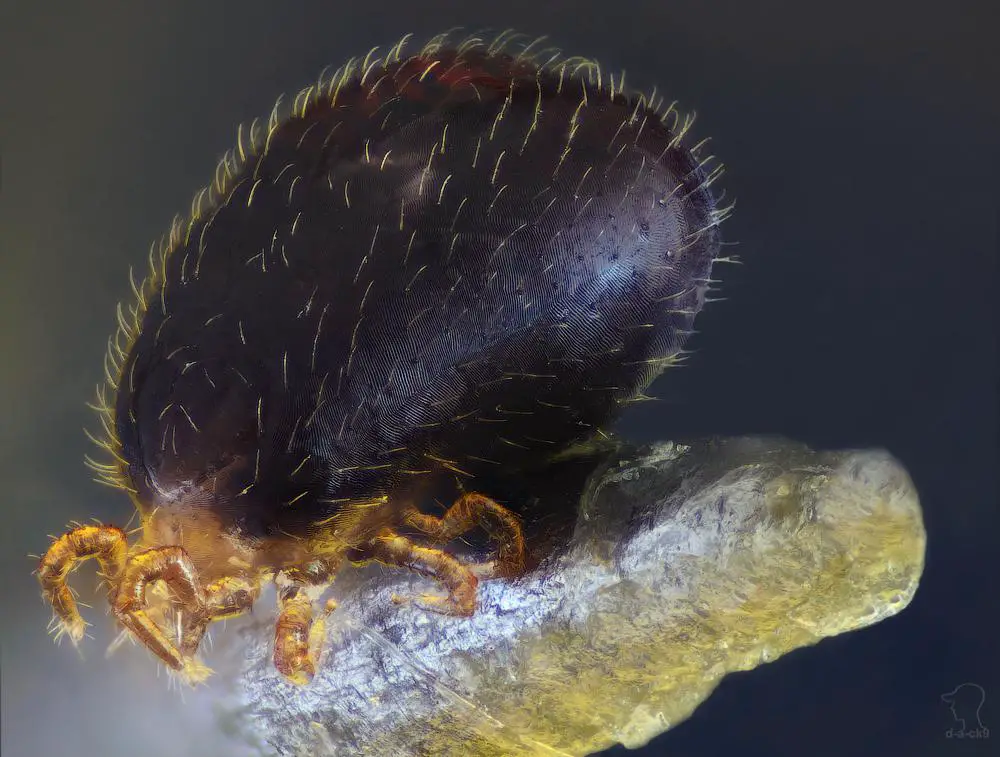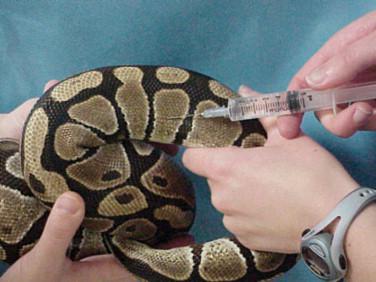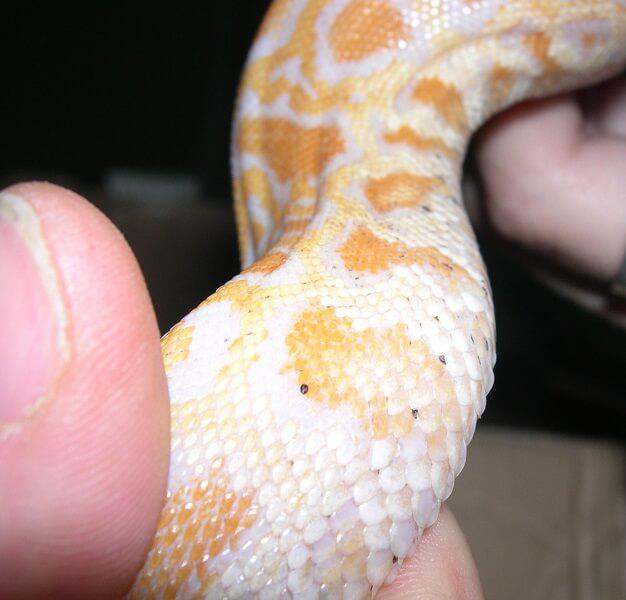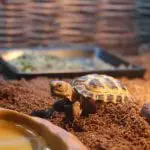As a pet owner and snake hobbyist, one of the worst things that you can experience is finding out that your pet has been infected with snake mites. Why should you be wary of this situation? Why should you stay away from Acariasis? Read on to find out more.
What is Acariasis?
Acariasis is a medical term used to describe a rash, which is caused by mites that sometimes come with papillae, leading to pruritic dermatitis, or papule. This is usually accompanied by itching sensations and showing up of hives. In pet owner terms, it is commonly called scabies or mange.
Acariasis in Snakes: Ophionyssus natricis

Ophionyssus natricis is a reptile or parasitic mite that is most commonly found in snakes. But, this also occurs on some species of lizards, turtles, crocodiles, and other reptiles. These parasites feed on snakes, therefore, inducing their bodies to become engorged with fluids and blood from the snake. Once the mites have gotten in to puncture the skin of the snake, the snake will exhibit some signs of discomfort and irritation.
This parasitic mite is commonly observed in snakes and lizards. It has been a well-studied pathogen that has a direct life cycle. A single female mite has the capacity to produce thousands of offspring as long as they are under the most suitable conditions.
Signs & Symptoms
If a snake is facing the threat of snake mites, here are the things that you must consider:
- A reptile that is constantly soaking in its water dish is most likely facing the threats of being infested by acariasis.
- Look at the water in the snake’s enclosure and check for some tiny moving objects floating in the water, inside the cage, on the skin of the snake, around the snake’s eyes, in the labial pits of the snake, and in the skin folds beneath the snake’s lower jaw.
- Also, watch out for your skin as you might find these tiny organisms crawling over you moments after you have finished handling your snake.
- Seeing one or more raised scales from your snake can also be a sign. It can be detected by running your hands against the grain of your snake’s scales.
- Many infected reptiles or snakes also exhibit signs of dysecdysis. It might exhibit swollen eyes because of the mites that you see surrounding your pet’s spectacle.
- If your pet snake is infested by mites, it might also become irritable and lose its interest in eating.
Predisposed Conditions In Snake Captivity
In order to reproduce, mites require warmth in their environment and a moderate level of humidity so that it will successfully grow and molt. When mites live abundantly in your snake’s location, it is a sign of the owner’s poor sanitation and a lack of knowledge in the practice of quarantine. Mites are also known to transmit many diseases that are blood-borne, so finding them requires a serious and thorough full assessment by a reputable and trusted herp veterinarian.
The Usual Diagnostic Tests Recommended By Veterinarians

Source: https://www.sciencedirect.com/
Here are the common actions are done by herp veterinarians to check for the presence of snake mites:
- A sample of specks found from the water bowl must be brought to the veterinarian along with the snakes. The mites are readily confirmed through the simple use of magnification, but to know which specific mite is attacking your snake, it might require the submission of these mites to a specialized laboratory.
- Gray and black mites are most likely the species of Ophionyssus natricis, and there are red specks, which are most likely trombiculid mites or Ophionyssus acertinus.
- Some veterinarians also provide a glue trap to capture insects in the cage of your snake while your snake is spending time someplace else.
- A skin scrape may still be required to detect some trombiculid mites, which live beneath the skin.
What Are Some Preventive Actions To Follow & Safe Practices To Normally Observe?
You can isolate all the cages with intense mite infestation using these three techniques:
- Moat – A cage can be placed inside a moat of water to isolate the snake’s home. This is perfect and very effective for snakes that have a small enclosure at about the shape of a shoebox and small aquariums that can be placed inside large watertight containers. You must also add a couple of drops of dishwashing soap to the water as this decreases the surface tension in the water and will drown everything more quickly as they are trying to crawl away from their cage.
- Pesticide – You can also spray the floor and the shelf around the cage with anti-mites pesticides to kill all of the mites in your snake’s environment. Be sure to keep the room airy and well-ventilated so that all the fumes do not affect you or your reptiles.
- Tape – A low tech and low budget isolation practice places the duct tape or heavy-duty masking tape around the exit points of the cage as well as the cage or on the shelf that is surrounding the cage. The edge of the tape facing the cage must be loosened and rolled back or loosened to expose the sticky underside. This will trap all the mites that will try to escape from your pet snake’s cage.
After doing these isolation tactics, you must then assess all the other reptiles in your house, if any, because mites can still reach them or may have reached them before. If any other animals suffer similarly to your snake, follow the steps above as well.
Next, you must clean all the cages that have been infested with mites and throw all the substrates. You should throw out all the porous wood furnishings and place them inside black plastic bags. Make sure that the black plastic bag is sealed tightly and that you place it immediately outside. Remember that having a single mite escape to your house will lead to several thousands of mites just within a few months.
Check out all your wood furnishings in the house and try to identify whether having wood decorations is worth the possible outbreak of mites in your house. Should you decide to still save your wood decorations, you can spray them with a pesticide strip to the bag. Then, you must make sure to close the bag tightly and place this bag in a protected area for one weak.
Other Tips To Protect Your Snake Against Snake Mites
- Wash the cage of your snake regularly and include all their things in warm water with soap and rinse everything well.
- Use a substrate that is easy to change, just like a newspaper, and use non-porous furnishings for the snake’s enclosure until the snake has been recorded as free of mites for 3 months.
- Do not place your snake into the cage until you have finalized treatment for mites.
- Do a strict quarantine regime for your snake.
- Soak the snake in shallow water for about 30 minutes and inspect water and your snake carefully for the presence of mites.
- Discuss everything with your veterinarian, including whether you should start with a preventive mite treatment.
- Do the quarantine for 60 days and closely monitor the snake and its cage for mites.
- Observe the proper sanitation and hygiene in your husbandry routine.
- Only begin handling the reptiles that are mite-infested, as well as all their tools, cage, and other items, after you have interacted with other pets.
- Before and after handling your pet animal, make sure that you wash your hands with warm and soapy water.
- To dry your hands, make sure that you use a disposable paper towel.
- For emphasis, you should never forget that you must not go back and attempt to handle your healthy pet animal after you have handled a reptile that has been through a mite infestation.
Usual Treatment For Acariasis, As Suggested By Veterinarians
There are acaricides that you can use to help address this issue. But, you should ensure that you do not go for dog and cat flea and tick sprays. This is because these sprays possess some active ingredients and concentrations that can be very toxic for snakes and other reptiles.
Additionally, many of these over-the-counter mite treatments are most often seen as ineffective. While there are a few who are known to be effective, you should ensure that you not try or test out a single product without researching it and consulting with an experienced and trusted herp veterinarian.
You should also consider having your snake undergo bloodwork exams and other diagnostic tests so that you can rule out all possible underlying issues. This is also very important in cases where your snake has other problems that are much worse, and if you notice that your snake is not acting like its normal self. Again, if you are in doubt, consult your snake’s doctor for the best advice.



